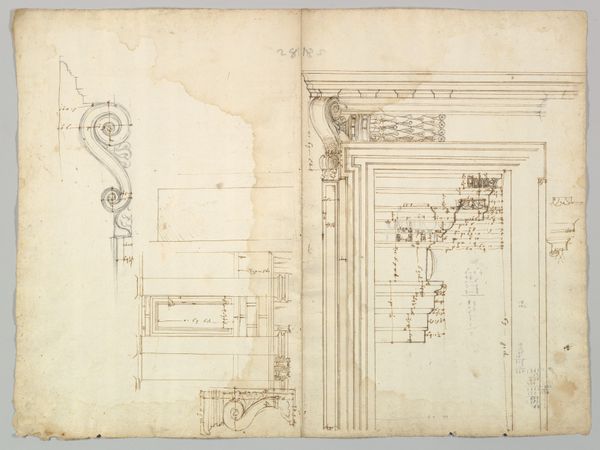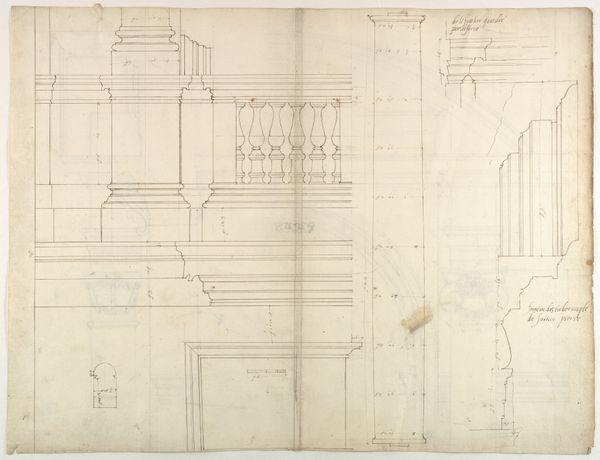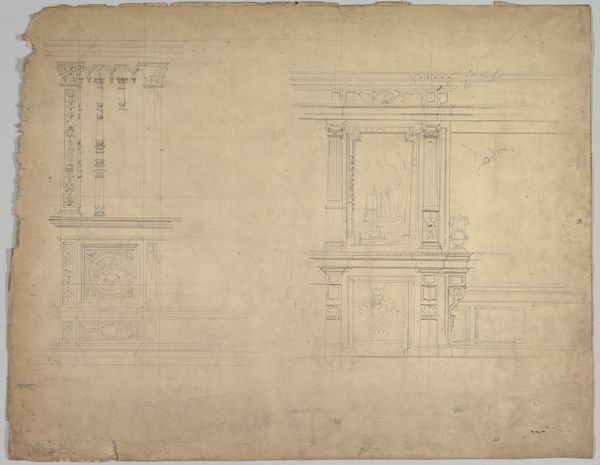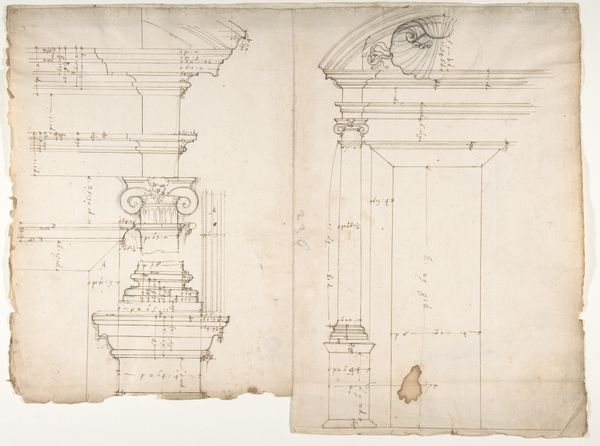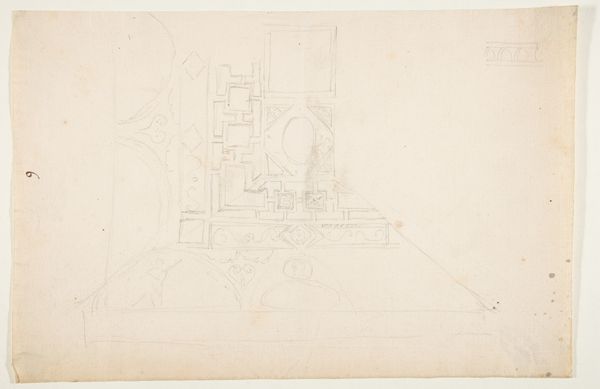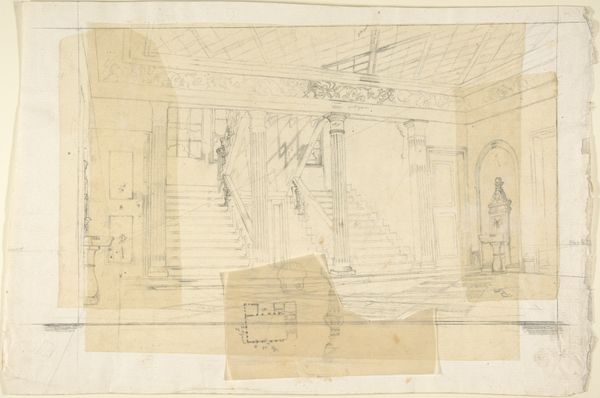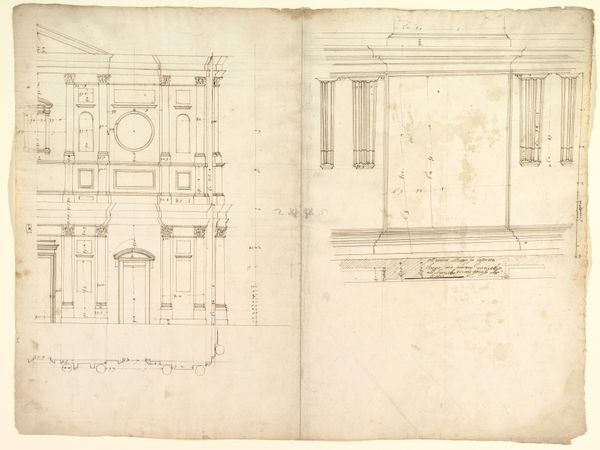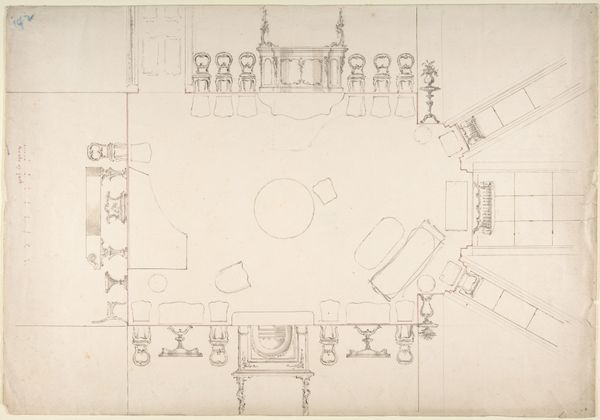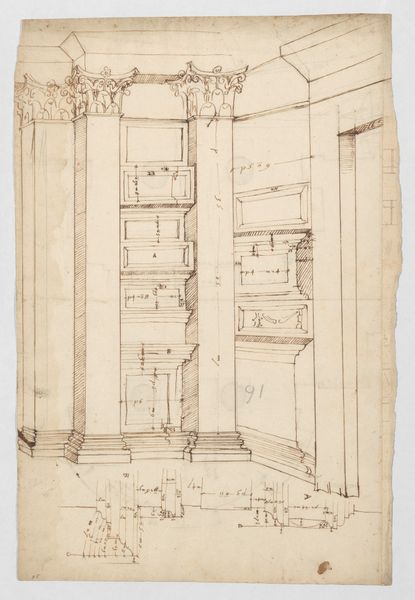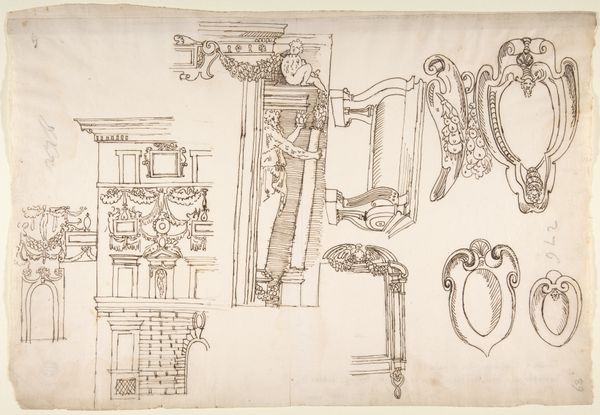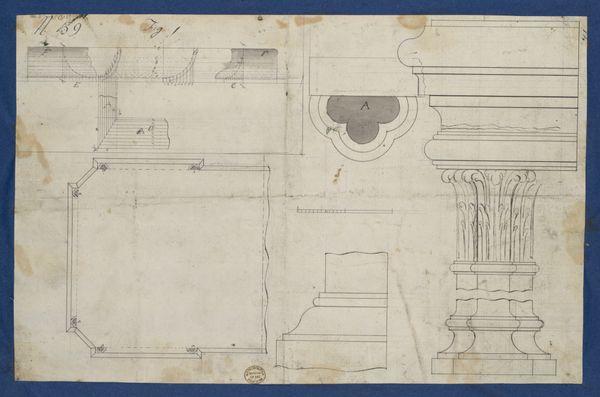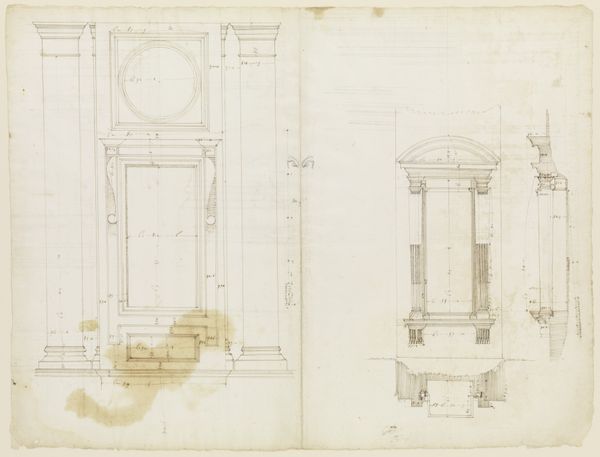
Palazzo Massimo alle Colonne, fireplace, details; Unknown, cornice, profile (recto) Palazzo Massimo alle Colonne, door and window, details (verso) 1500 - 1560
0:00
0:00
drawing, print, pencil, architecture
#
architectural sketch
#
drawing
# print
#
etching
#
11_renaissance
#
pencil
#
italian-renaissance
#
architecture
Dimensions: sheet: 11 7/16 x 16 15/16 in. (29 x 43 cm)
Copyright: Public Domain
Curator: Looking at this piece, I’m immediately struck by its intimate, almost secretive quality. It feels like sneaking a peek at a master architect's notebook. What do you think? Editor: It's intriguing. On view, we have architectural studies dating roughly from 1500 to 1560, thought to depict details from Palazzo Massimo alle Colonne in Rome. They're pencil, etching, and ink drawings, capturing cornice profiles, fireplace elements, and door/window details. Curator: A glimpse behind the curtain! It makes me think about what the creative process was for the architects from that time. But something about the linear precision—the lack of adornment beyond the architectural details—hints at something deeper. Less about opulent living and more about structure and control. Editor: Right, Renaissance architecture wasn’t merely about building; it symbolized power, order, and a humanist return to classical forms. The column details especially—those recall the architectural language of ancient Rome. Columns signified strength and permanence. Palazzo Massimo itself has quite a layered story of rebuilding and familial legacy reflected in its very structure. Curator: Ah, see? So, these sketches aren't just functional. Even as sketches, they speak to that enduring desire to evoke the past—to build on it, quite literally! I see a reaching-backwards that creates something bold, fresh. And, the visual language--you've said it--of authority. How very interesting! Editor: It’s fascinating how an unfinished drawing can carry such weighty concepts. The fireplace especially suggests domestic power; hearths were focal points, family history in stone. And look at how meticulously each molding, each curve, is rendered, conveying both a deep understanding of classical ideals, and a clear departure from the Middle Ages. Curator: The line work almost looks like handwriting. The columns especially – the flourishes feel… alive. Editor: It is quite arresting, and those subtle irregularities, maybe the individual's mark even on the face of monumental design. Curator: Seeing that 'handwriting,' if you will, is the delight here! Even centuries later, there’s this whisper. "I made this. I had a hand in building this idea." It humanizes everything in an uncanny way, no? Editor: Indeed! We've caught a fleeting dialogue—or even perhaps just a single statement across time, of human intention made architectural. Curator: An unfinished melody. It makes one feel...well, inspired.
Comments
No comments
Be the first to comment and join the conversation on the ultimate creative platform.
